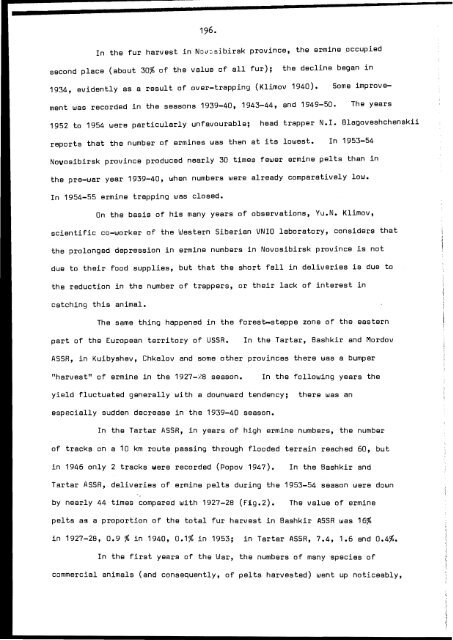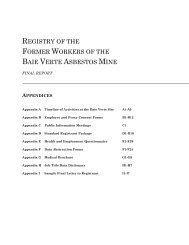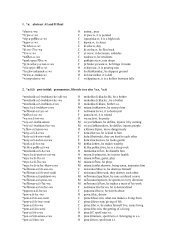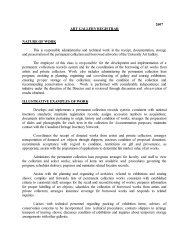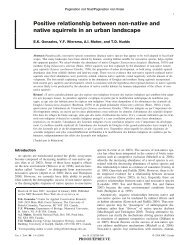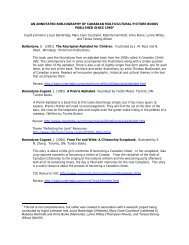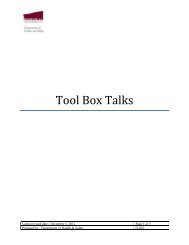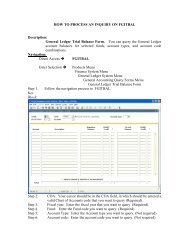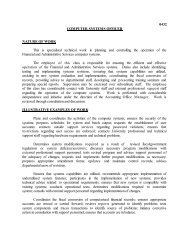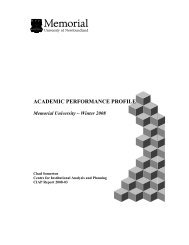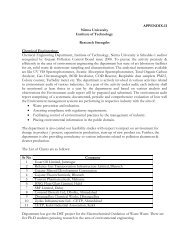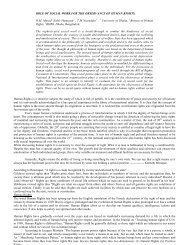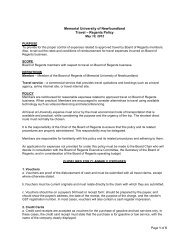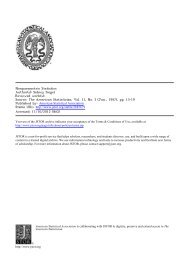Create successful ePaper yourself
Turn your PDF publications into a flip-book with our unique Google optimized e-Paper software.
196. <br />
In the fur harvest in Nov~sibirsk<br />
province, the ermine ~ccupied<br />
second place (about 30% <strong>of</strong> the value <strong>of</strong> all fur);<br />
the decline began in<br />
1934, evidently as a result <strong>of</strong> over-trapping (Klimov 1940). Some improve-<br />
ment was recorded in the seasons 1939-40, 1943-44, and 1949-50. <br />
The years<br />
1952 to 1954 were particularly unfavourable; head trapper N.I. Blagoveshchenskii <br />
reports that the number <strong>of</strong> ermines was then at its lowest.<br />
In 1953-54 <br />
Novosibirsk province produced nearly 30 times fewer ermine pelts than in <br />
the pre-war year 1939-40, when numbers were already comparatively low. <br />
In 1954-55 ermine trapping was closed. <br />
On the basis <strong>of</strong> his many years <strong>of</strong> observations, Yu.N. Klimov,<br />
scientific co-worker <strong>of</strong> the Western Siberian VNIO laboratory, considers that<br />
the prolonged depression in ermine numbers in Novosibirsk province is not<br />
due to their food supplies, but that the short fall in deliveries is due to<br />
the reduction in the number <strong>of</strong> trappers, or their lack <strong>of</strong> interest in<br />
catching this animal.<br />
The same thing happened in the forest-steppe zone <strong>of</strong> the eastern<br />
part <strong>of</strong> the European territory <strong>of</strong> USSR.<br />
In the Tartar, Bashkir and Mordov<br />
ASSR, in Kuibyshev, Chkalov and some other provinces there was a bumper<br />
"harvest" <strong>of</strong> ermine in the 1927-28 season.<br />
In the following years the<br />
yield fluctuated generally with a downward tendency;<br />
there was an<br />
especially sudden decrease in the 1939-40 season.<br />
In the Tartar ASSR, in years <strong>of</strong> high ermine numbers, the number<br />
<strong>of</strong> tracks on a 10 km route passing through flooded terrain reached 60, but<br />
in 1946 only 2 tracks were recorded (Popov 1947).<br />
In the 8ashkir and<br />
Tartar ASSR, deliveries <strong>of</strong> ermine pelts during the 1953-54 season were down<br />
by nearly 44 times compared with 1927-28 (Fig.2).<br />
The value <strong>of</strong> ermine<br />
pelts as a proportion <strong>of</strong> the total fur harvest in 8ashkir ASSR was 16%<br />
in 1927-28, 0.9 % in 1940, 0.1% in 1953; in Tartar ASSR, 7.4, 1.6 and 0.4%.<br />
In the first years <strong>of</strong> the War, the numbers <strong>of</strong> many species <strong>of</strong><br />
commercial animals (and consequently, <strong>of</strong> pelts harvested) went up noticeably,


